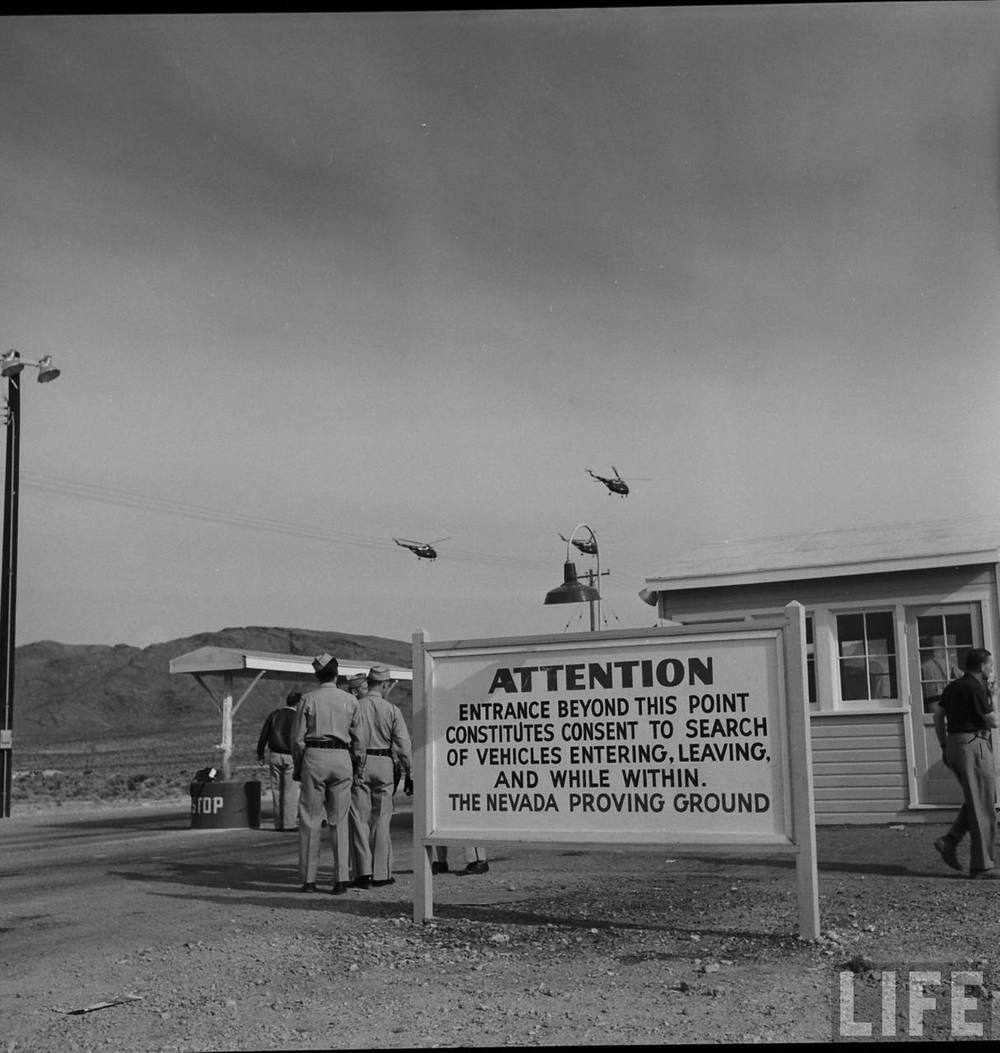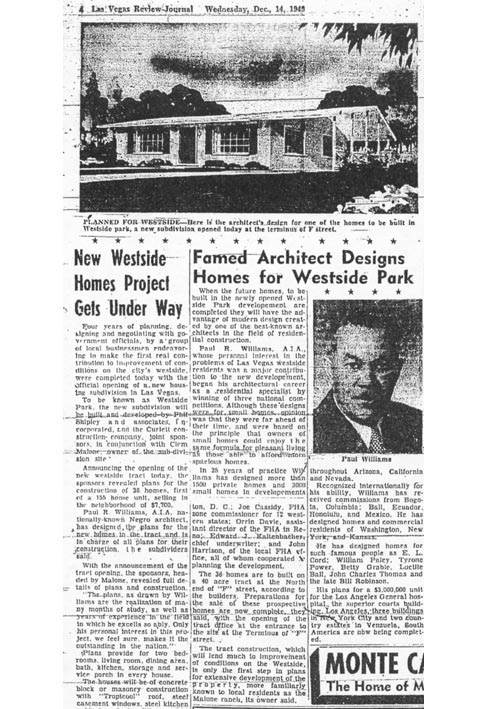
Sixty years ago it was known for its above ground testing. Today, it is a historical site and you can now visit the Nevada Proving Grounds where much of that history was made:
There was a time when a mushroom cloud billowing over the Nevada desert was celebrated as a symbol of American strength — and, about 75 miles southeast in Las Vegas, as a terrific tourist draw.
In the 1950s, casinos threw "dawn parties," where gamblers caroused until a flash signaled the explosion of an atomic bomb at the Nevada Test Site. Tourism boosters promoted the Atomic Cocktail (vodka, brandy, champagne and a dash of sherry) and pinups such as Miss Atomic Blast, who was said to radiate "loveliness instead of deadly atomic particles."
Sixty years after the first atmospheric tests here, the 1,375-square-mile site continues to be a tourist magnet, though of a far different nature. Thousands of people each year sign up months in advance to see what is essentially a radioactive ghost town.
The tourists ride in an air-conditioned bus through part of the site, but it might as well be a time machine. The era feted is one of Soviet bad guys, grade-school air raid drills and warnings delivered in capital letters: Visitors are welcomed by the sign ACCESS LIMITED.
There's no mention of the thousands of "downwinders" poisoned by radiation, or the 1.6 trillion gallons of water under the site that have been contaminated. In videos, the end of testing in 1992 is spoken of in near-mournful tones. The tour's intent, said spokesman Darwin Morgan, is to explain what unfolded on the site, not the fallout from it.
Today, 1,000 or so employees — down from the 10,000 who once worked here — mainly carry out less exotic tasks: training first responders, burying toxic waste. The tours wend through these areas, but the bomb refuse remains the star attraction.
The outing has changed little since it was launched in the 1980s, when the tour was sometimes canceled due to "program activities" (as in, explosions).
That may explain its rigidity, beginning with the packet each tour-goer is mailed. No cameras, it said. Or cellphones, BlackBerrys, binoculars, laptops or recorders. If contraband is discovered, THE TOUR MAY BE TERMINATED.
One morning last month, a tour bus departed about 8 a.m. from Las Vegas for the 90-minute drive to the site. En route tourists watched a low-budget video, which included a shot of a human arm disappearing into the side of a steer.
Four test site steers were "fistulated," or given a surgical opening so scientists could reach in to take samples from their stomachs. One of them, named Big Sam, often appeared at fairs.
When the bus pulled up to what is now called the Nevada National Security Site, guide John Robson pointed out two pens where protesters had been detained. They resembled the pens out at bomb sites where pigs had been corralled to test the effects of radiation.
Robson, a retired test site engineer, stepped off the bus to grab some paperwork. "Several of the places we go want records of who's been there," he said. Then a guard in desert fatigues walked through the bus to check tourists' badges. He was armed.
For more on the story:
http://tinyurl.com/3c6hznq
Photo credit: Life Magazine











